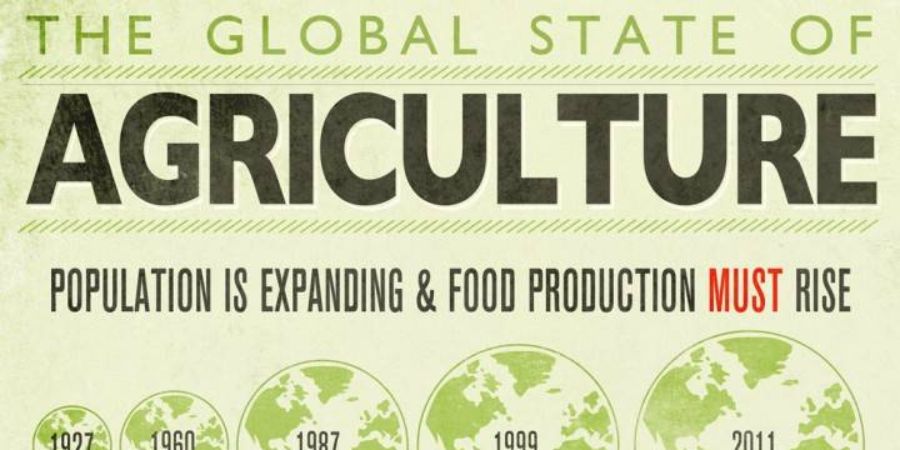

Agriculture is the art and science of cultivating land, growing crops, and raising livestock. It includes the preparation of plant and animal products for human consumption and their distribution to the market. Agriculture provides most of the world's food and textiles. Cotton, wool and leather are all agricultural products. Agriculture also provides timber for construction and paper products.
These products, as well as the agricultural methods used, can vary from region to region of the world. The beginning of agriculture
Over the centuries, the development of agriculture has contributed to the rise of civilizations.
Before agriculture spread, humans spent most of their lives foraging, hunting wild animals, and harvesting wild plants. About 11,500 years ago, people gradually learned to grow grains and roots and settled into a life based on agriculture.
2,000 years ago, most of the earth's population became dependent on agriculture. Scholars aren't sure why this shift to agriculture happened, but it could be due to climate change.
When people started farming, they also started grazing and raising wild animals. Adapting wild plants and animals for human use is called domestication.
The first plants to be domesticated were probably rice or maize. Chinese farmers have been cultivating rice since 7500 BC.
The first pet was a dog, used for hunting. Sheep and goats were probably domesticated later. People also domesticated cattle and pigs. Most of these animals were once hunted for their skin and meat. Now many of them are also sources of milk, cheese and butter. Finally, people use livestock such as cows to plow, pull carts, and pull carts.
Agriculture has created conditions for people to produce surplus food. They can use this supplement when crops fail or exchange for other goods. Surplus food allows people to do other activities unrelated to agriculture. Agriculture kept formerly nomadic groups close to their fields and led to the development of permanent villages. They were linked together through trade. The new economies have been very successful in a number of areas where cities have developed and civilizations have developed. The first civilizations based on intensive agriculture arose near the Tigris and Euphrates rivers in Mesopotamia (now Iraq and Iran) and along the Nile in Egypt.
Food production must keep up with population growth and distribution. This is a great agricultural and political challenge. The challenge is not food shortages, but the uneven distribution of the world food supply. The relationship between population and arable land has benefited some countries more than others. Some experts argue that government policies in both developed and developing countries have impeded the equitable distribution of food. Droughts, floods and other disasters continue to cause local food shortages.
